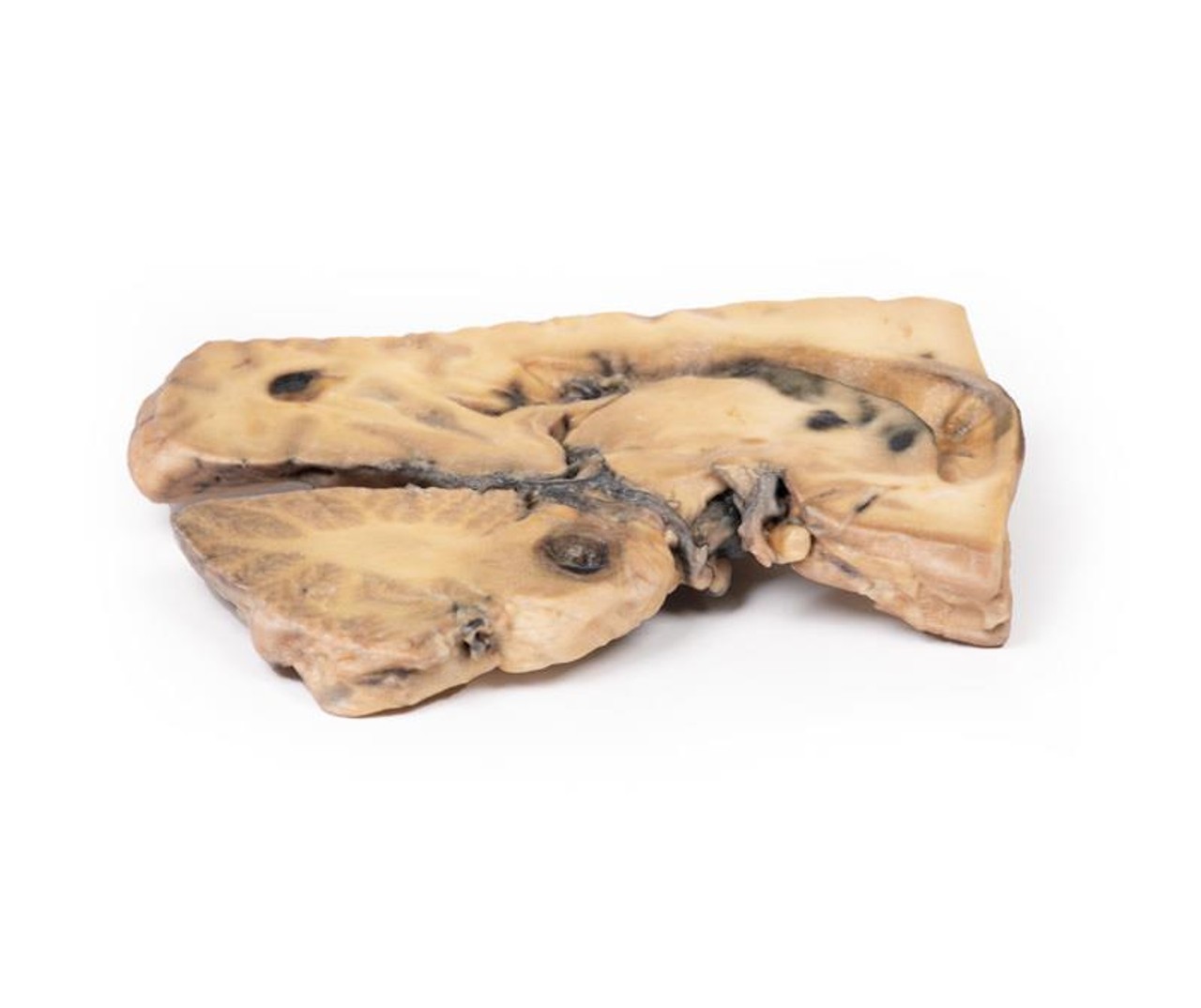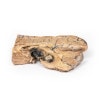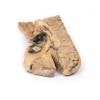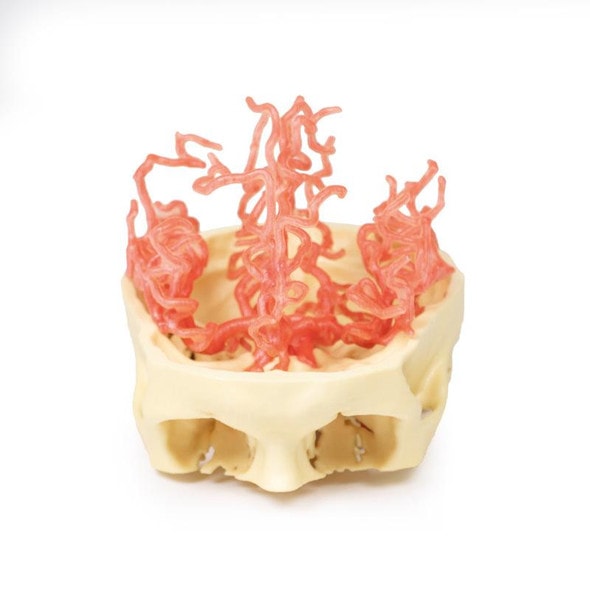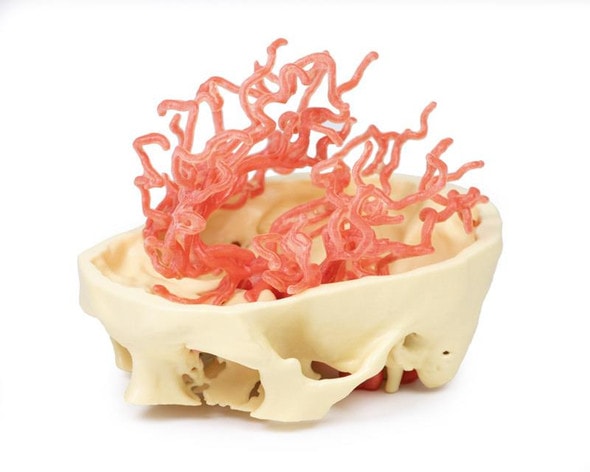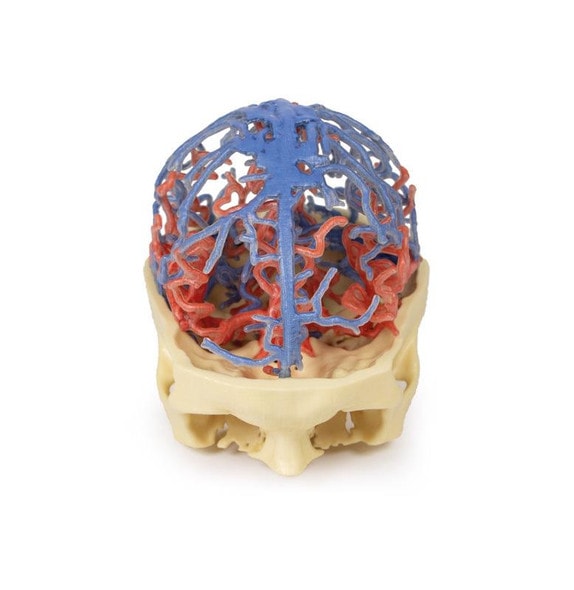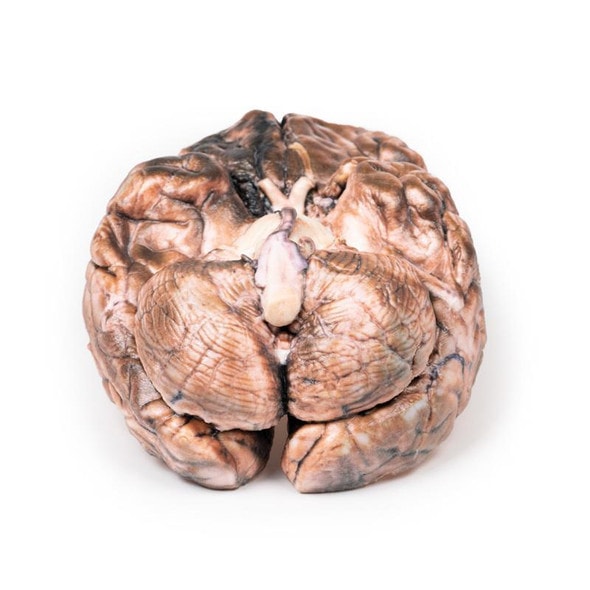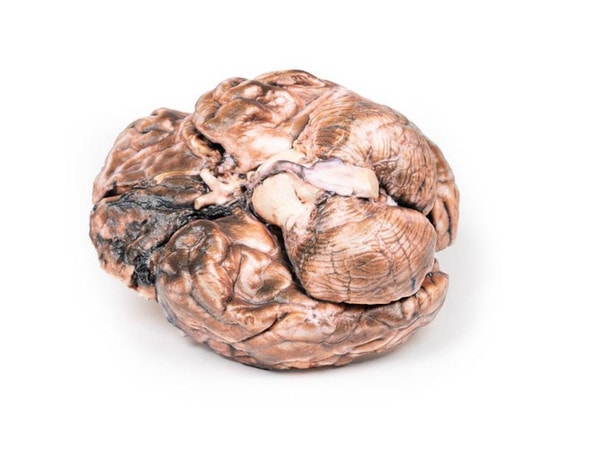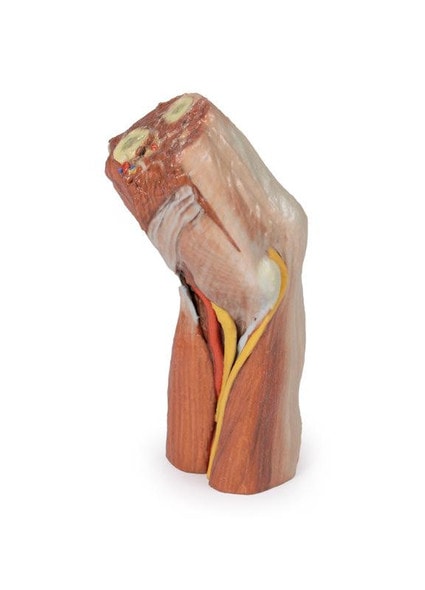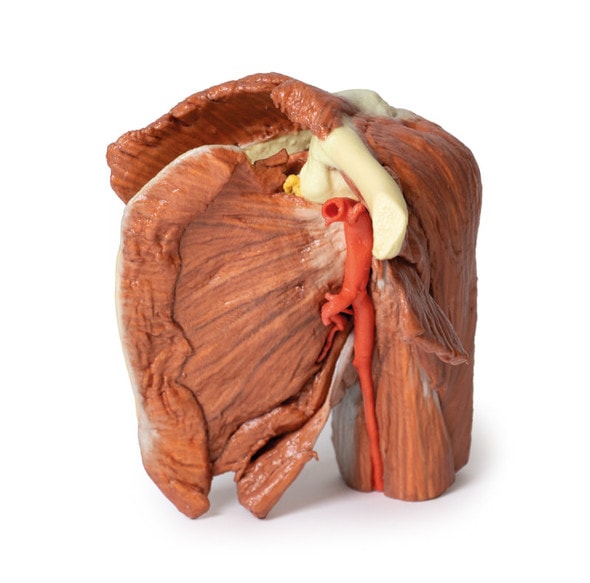Description
Developed from real patient case study specimens, the 3D printed anatomy model pathology series introduces an unmatched level of realism in human anatomy models. Each 3D printed anatomy model is a high-fidelity replica of a human cadaveric specimen, focusing on the key morbidity presentations that led to the deceasement of the patient. With advances in 3D printing materials and techniques, these stories can come to life in an ethical, consistently reproduceable, and easy to handle format. Ideal for the most advanced anatomical and pathological study, and backed by authentic case study details, students, instructors, and experts alike will discover a new level of anatomical study with the 3D printed anatomy model pathology series.
Clinical History
A 37-year-old patient arrived at the hospital after falling and striking his head, with subsequent symptoms of headache, vomiting and disorientation. CT scan showed dilatation of the lateral ventricles associated with a large mass projecting into the third ventricle posteriorly. One week later a shunt was performed for hydrocephalus. An angiogram revealed a partially thrombosed aneurysm, measuring 1 x 1 cm, arising from the basilar artery. At 3 months post-op the shunt was revised due to obstruction, with repeat cerebral angiogram revealing interval enlargement of the aneurysm. Attempted ligation of the aneurysm was unsuccessful. The patient remained unconscious despite several attempts to revise the shunt and he died.
Pathology
This brain has been sliced in the mid-sagittal plane. It comprises a whole hemi-section of the brain about 1cm thick. On the medial surface a large darkly colored ovoid berry aneurysm measuring 5 x 2 cm in diameter, arising from the basilar artery is clearly visible. It has eroded up into the midbrain, compressing the third ventricle from below, and inferiorly into the substance of the pons. The wall of the aneurysm appears intact although blood clot is seen in the third ventricle and appears to be leaking through the lateral wall of that ventricle. The aneurysm is filled with a laminated thrombus. A small area of mucoid degeneration measuring 0.4 cm in diameter is seen posterior to the aneurysm within the pons.
Examination of the lateral aspect of the sagittal section shows dilatation of the lateral ventricle, blood staining of the ventricular wall and patchy hemorrhagic infarction of the caudate nucleus. There was some discoloration of the meninges overlying the tip of the left temporal lobe and the cerebellum (not included in 3D print), consistent with sub-arachnoid hemorrhage.
Further Information
Prevalence of aneurysms is approximately 3.2% in the population, while rupture is much less common, occurring only 7.9 per 100,000 person-years. A minority of intracranial aneurysms arise from the posterior circulation and are mostly situated at junctional points about the basilar, vertebral, and cerebellar arteries. Symptoms are either secondary to subarachnoid hemorrhage or a mass effect with associated compression of the adjacent brain parenchyma and cranial nerves. Rupture causes complications due to bleeding and raised intracranial pressure. Hydrocephalus, re-bleed and vasospasm may also occur. Management is via surgical means; in recent years, novel therapies include endovascular intervention with coils and subsequent monitoring.
Advantages of 3D Printed Anatomical Models
- 3D printed anatomical models are the most anatomically accurate examples of human anatomy because they are based on real human specimens.
- Avoid the ethical complications and complex handling, storage, and documentation requirements with 3D printed models when compared to human cadaveric specimens.
- 3D printed anatomy models are far less expensive than real human cadaveric specimens.
- Reproducibility and consistency allow for standardization of education and faster availability of models when you need them.
- Customization options are available for specific applications or educational needs. Enlargement, highlighting of specific anatomical structures, cutaway views, and more are just some of the customizations available.
- Like real human cadaveric specimens, plastinated models are extremely expensive.
- Plastinated specimens still require real human samples and pose the same ethical issues as real human cadavers.
- The plastination process is extensive and takes months or longer to complete. 3D printed human anatomical models are available in a fraction of the time.
- Plastinated models, like human cadavers, are one of a kind and can only showcase one presentation of human anatomy.
Disadvantages of Plastinated Specimen
- Like real human cadaveric specimens, plastinated models are extremely expensive.
- Plastinated specimens still require real human samples and pose the same ethical issues as real human cadavers.
- The plastination process is extensive and takes months or longer to complete. 3D printed human anatomical models are available in a fraction of the time.
- Plastinated models, like human cadavers, are one of a kind and can only showcase one presentation of human anatomy.
Advanced 3D Printing Techniques for Superior Results
- Vibrant color offering with 10 million colors
- UV-curable inkjet printing
- High quality 3D printing that can create products that are delicate, extremely precise, and incredibly realistic
- To improve durability of fragile, thin, and delicate arteries, veins or vessels, a clear support material is printed in key areas. This makes the models robust so they can be handled by students easily.


